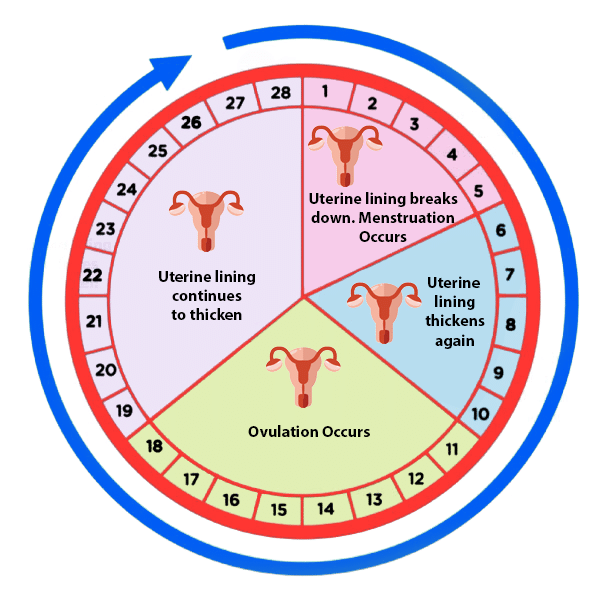In the complex world of reproductive health and paternity, the conception calculator has become an essential tool for individuals seeking clarity about potential fatherhood. Whether due to overlapping relationships or uncertainty during conception, having two possible fathers introduces a unique set of questions and challenges. This article delves into the intricacies of using a conception calculator in such scenarios, offering insights and guidance to help navigate this sensitive topic.
Understanding the concept of two possible fathers requires a comprehensive approach that combines scientific knowledge, emotional awareness, and legal considerations. The journey to uncovering the truth about paternity is both personal and impactful, affecting not only the individuals involved but also the child at the center of the situation.
Through this article, we aim to provide a thorough exploration of the conception calculator's role in cases involving two possible fathers. From understanding the science behind conception to exploring the tools and resources available, we will equip you with the information needed to make informed decisions. Let's begin by examining the basics of conception and how a calculator can assist in unraveling the mystery of paternity.
Read also:Pron Video Understanding Its Impact And Navigating The Digital Landscape
Understanding the Basics of Conception
What Is Conception?
Conception refers to the moment when a sperm cell fertilizes an egg, marking the beginning of pregnancy. This process typically occurs within the fallopian tubes and is influenced by several factors, including ovulation timing, sperm viability, and overall reproductive health. Understanding the mechanics of conception is crucial when dealing with cases involving two possible fathers, as timing plays a significant role in determining paternity.
- Ovulation typically occurs 14 days before the start of a menstrual cycle.
- Sperm can survive in the female reproductive system for up to five days.
- The egg is viable for fertilization for approximately 12-24 hours after release.
How Does Timing Affect Paternity?
The timing of intercourse relative to ovulation is critical in determining paternity. If a woman has sexual encounters with two different men within a short timeframe, both could potentially be the biological father. This situation necessitates the use of precise tools, such as conception calculators, to estimate the likelihood of each man being the father.
Research from the American Pregnancy Association highlights that the fertile window—the six-day period leading up to and including ovulation—is when conception is most likely to occur. By identifying this window, individuals can better assess the probability of paternity based on the timing of each encounter.
What Is a Conception Calculator?
A conception calculator is a digital tool designed to estimate the date of conception based on a woman's menstrual cycle and other relevant factors. These calculators use algorithms to analyze data such as the first day of the last menstrual period, average cycle length, and ovulation patterns to provide an estimated conception date.
When two possible fathers are involved, a conception calculator can help narrow down the timeframe during which conception occurred. By comparing the estimated conception date with the dates of each sexual encounter, individuals can gain valuable insights into the likelihood of paternity.
How to Use a Conception Calculator for Two Possible Fathers
Gathering Necessary Information
Before using a conception calculator, it is essential to gather accurate information about the woman's menstrual cycle and the dates of each sexual encounter. This data includes:
Read also:Camilla Araujo The Rising Star In The World Of Entertainment
- The first day of the last menstrual period (LMP).
- The average length of the menstrual cycle.
- The approximate dates of sexual encounters with both potential fathers.
Accuracy in providing this information is crucial for obtaining reliable results from the conception calculator.
Steps to Use the Calculator
Follow these steps to use a conception calculator effectively:
- Input the first day of the last menstrual period into the calculator.
- Enter the average length of the menstrual cycle, if known.
- Review the estimated ovulation date and fertile window provided by the calculator.
- Compare the estimated fertile window with the dates of sexual encounters to assess the likelihood of paternity.
While conception calculators offer valuable insights, they should be used as a preliminary tool rather than a definitive answer. For conclusive results, DNA testing remains the most reliable method.
Factors That Can Affect Conception Calculator Results
Several factors can influence the accuracy of a conception calculator's results, including:
- Irregular menstrual cycles: Women with irregular cycles may experience difficulty in pinpointing ovulation.
- Hormonal fluctuations: Stress, illness, or other factors can impact ovulation timing.
- Delayed or early ovulation: Ovulation may not always occur at the expected time, affecting conception estimates.
Despite these potential limitations, conception calculators remain a useful starting point for individuals seeking clarity about paternity.
Exploring Scientific Evidence and Studies
Research on Conception Timing
Scientific studies have shed light on the intricacies of conception timing. A study published in the journal Human Reproduction found that the probability of conception increases significantly during the fertile window. Researchers noted that the likelihood of pregnancy is highest when intercourse occurs within one to two days before ovulation.
Statistical Insights
Data from the Centers for Disease Control and Prevention (CDC) indicates that approximately 10% of pregnancies result from intercourse occurring outside the expected fertile window. This statistic underscores the importance of considering all potential factors when using a conception calculator.
Legal and Ethical Considerations
Cases involving two possible fathers raise important legal and ethical questions. Determining paternity is not only a personal matter but can also have significant implications for child custody, support, and inheritance rights. Legal systems worldwide recognize DNA testing as the gold standard for establishing paternity, ensuring fair and accurate outcomes.
When navigating the legal aspects of paternity, it is advisable to consult with a qualified attorney specializing in family law. They can provide guidance on the necessary steps and documentation required to resolve paternity disputes.
Emotional and Psychological Impact
Dealing with Uncertainty
The uncertainty surrounding paternity can be emotionally challenging for all parties involved. Open and honest communication is key to addressing these feelings and fostering a supportive environment. Counseling or therapy may be beneficial for individuals and families seeking to navigate this complex situation.
Support Systems
Building a strong support system is essential during this time. Reaching out to trusted friends, family members, or support groups can provide comfort and guidance. Online communities and forums dedicated to reproductive health and paternity issues offer additional resources and advice.
Alternatives to Conception Calculators
Home Pregnancy Tests
While not directly related to paternity, home pregnancy tests can confirm pregnancy and provide an estimated due date. This information can be useful in conjunction with a conception calculator to refine estimates of conception timing.
DNA Testing
For conclusive results, DNA testing remains the most reliable method of determining paternity. Modern DNA tests are highly accurate and can be performed using samples such as saliva or blood. Results are typically available within a few days to weeks, providing definitive answers to paternity questions.
Conception Calculator Tools and Resources
Recommended Calculators
Several reputable conception calculators are available online, offering varying levels of functionality and accuracy. Some popular options include:
- FertilityFriend
- BabyCenter Conception Calculator
- What to Expect Due Date Calculator
These tools incorporate user-friendly interfaces and advanced algorithms to deliver precise estimates of conception dates.
Additional Resources
For further information on conception and paternity, consider exploring the following resources:
- American Pregnancy Association
- Centers for Disease Control and Prevention
- World Health Organization
Conclusion
In conclusion, the use of a conception calculator in cases involving two possible fathers provides valuable insights into the timing of conception and the likelihood of paternity. While these tools offer a starting point, DNA testing remains the most reliable method for determining biological fatherhood. By combining scientific knowledge, emotional awareness, and legal considerations, individuals can navigate this complex situation with confidence and clarity.
We invite you to share your thoughts and experiences in the comments section below. Your feedback helps us improve and expand our content to better serve our readers. For more informative articles on reproductive health and related topics, explore our website and stay updated with the latest developments in this field.
Table of Contents
- Understanding the Basics of Conception
- What Is a Conception Calculator?
- How to Use a Conception Calculator for Two Possible Fathers
- Factors That Can Affect Conception Calculator Results
- Exploring Scientific Evidence and Studies
- Legal and Ethical Considerations
- Emotional and Psychological Impact
- Alternatives to Conception Calculators
- Conception Calculator Tools and Resources
- Conclusion


